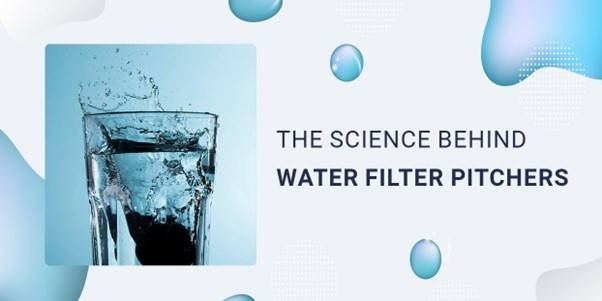Many households use water filter pitchers to make tap water cleaner and safer. Thought about the scientific mechanisms that make these pitchers operate? Explore the scientific foundations of water filter pitchers in this article, which dissects key ideas like filtration, containment, and the types of substances they can purify water from.
Filtering: Keeping Bad Stuff Out
At the core of every water filter pitcher is the process of filtering. Filtering cleans water by passing it through a medium that can apprehend impurities. Most water filter pitchers use filters made of activated carbon. These filters have many tiny holes that stop bad things from getting through.
Activated Carbon: The Super Filter
Activated carbon is a unique material from things like coconut shells or wood. It’s turned into a filter by heating it and making it full of tiny holes. These holes are like traps for bad things in the water.
Trapping Bad Stuff: How It Works
When water passes through the activated carbon filter, the bad things in the water stick to the surface of the carbon. It’s like when you catch something with sticky tape. The bad stuff gets stuck on the filter. This is how the water becomes cleaner and safer to drink.
What Gets Removed
Activated carbon filter-equipped water pitchers are proficient at purifying water by targeting particular impurities, such as:
Chlorine
Water treatment plants often use chlorine to make water safe to drink, but it can make the water taste and smell strange. Activated carbon filters can remove chlorine, improving the water’s taste and smell.
Smelly and Bad-Tasting Stuff
Sometimes, water can have things that make it taste or smell bad. The tiny holes in activated carbon can capture these things, making the water more enjoyable.
Heavy Metals
Certain water filtration pitchers are specifically engineered with the capacity to extract heavy metals such as lead, mercury, and copper. These metallic contaminants can potentially infiltrate the water supply through the conduits and plumbing systems. The intricate porous matrix of activated carbon within these filters adeptly ensnares these pernicious heavy metals, thereby averting their ingress into the potable water you consume.
Limitations of Carbon Filters
Even though activated carbon filters are good at removing certain bad things from water, they can’t remove minerals like calcium, magnesium, and fluoride that are dissolved in the water. Some water filter pitchers use extra filters or processes like reverse osmosis to deal with these minerals. Distinguished products like ProOne Water Filter Pitcher have demonstrated their market presence over time, substantiating their reputation by consistently delivering impressive results.
Changing the Filter: Keeping It Effective
Over time, the activated carbon filter in your water pitcher becomes clogged with the unwanted particles it has trapped. You need to replace the filter regularly to ensure it keeps working. How often you replace it depends on the filter’s size and your dirty water.
Taking Care of Your Pitcher
Maintenance of your water filter pitcher assumes paramount significance. Failure to engage in regular cleaning rituals may inadvertently culminate in re-releasing entrapped contaminants into your potable water. Water stagnation within the pitcher or filter chamber can create a hospitable environment for bacterial proliferation, thus underscoring the imperativeness of consistent sanitation practices.
Conclusion
Water filter pitchers help us have cleaner and safer tap water by using the science of filtering and trapping bad things. They are highly effective at improving the taste of water and purging it of unwanted elements. Nonetheless, it’s vital to make a thoughtful pitcher choice for your water and to be mindful of filter replacement. With the right knowledge, you can enjoy the benefits of clean and pure drinking water right at home.
Knowing how water filter pitchers work helps us make smart choices about our drinking water. It secures our access to the health benefits of clean and safe hydration without requiring a deep understanding of complex science.


